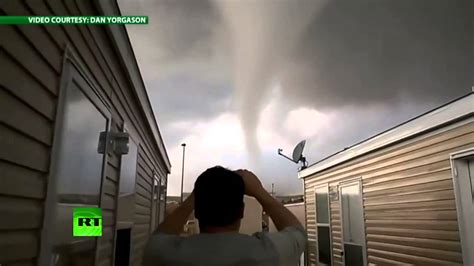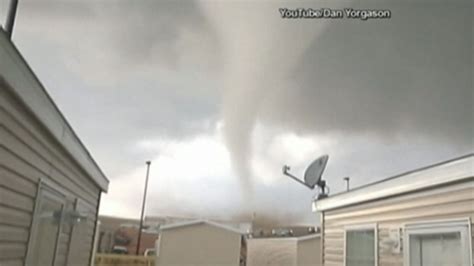
Southern California’s critical water supply, Diamond Valley Lake, is nearing full capacity, a dramatic turnaround after years of drought-induced depletion. Officials are celebrating the resurgence, highlighting the significance of recent storms and proactive water management strategies in replenishing the reservoir.
Diamond Valley Lake, the largest reservoir in Southern California, is experiencing a surge in water levels, approaching its maximum capacity following a prolonged period of drought that had significantly diminished its reserves. The Metropolitan Water District of Southern California (MWD), which manages the reservoir, reports that the lake is now holding over 800,000 acre-feet of water, a substantial increase that secures water supplies for millions of residents across the region.
The rebound is attributed to a series of atmospheric river storms that drenched California over the past year, delivering record-breaking precipitation and snowpack in the Sierra Nevada mountains. These storms provided a crucial influx of water into the state’s reservoirs and groundwater basins. Adel Hagekhalil, general manager of the MWD, stated, “Diamond Valley Lake is a prime example of how we can capture and store water during wet periods to ensure a reliable supply during dry times.” He further emphasized the importance of continued investment in water infrastructure and conservation efforts to safeguard against future droughts.
The near-full capacity of Diamond Valley Lake offers a sense of relief and optimism for Southern California, which has faced severe water shortages in recent years. The drought had prompted mandatory water restrictions, strained agricultural operations, and raised concerns about the long-term sustainability of the region’s water resources. With the reservoir now brimming, water managers have greater flexibility in meeting demands and mitigating the impacts of potential future dry spells.
Beyond the immediate relief, the replenishment of Diamond Valley Lake underscores the effectiveness of integrated water management strategies. These strategies include not only capturing and storing surface water but also investing in groundwater recharge, water recycling, and conservation programs. The MWD has been actively pursuing these approaches to diversify its water portfolio and enhance its resilience to climate variability.
The resurgence of Diamond Valley Lake also highlights the importance of long-term planning and infrastructure investments in ensuring water security. The reservoir, completed in 2000, was designed to provide a buffer against drought and to enhance the reliability of Southern California’s water supply. Its strategic location and capacity have proven invaluable in capturing and storing surplus water during wet years, which can then be drawn upon during dry periods.
Looking ahead, water managers are cautiously optimistic but remain vigilant about the ongoing challenges of climate change and water scarcity. While the current water situation is favorable, they emphasize the need for continued conservation efforts and investments in water infrastructure to ensure a sustainable water future for Southern California. The MWD is exploring additional opportunities to expand its storage capacity, enhance its water recycling capabilities, and promote water-use efficiency among residents and businesses.
The success story of Diamond Valley Lake serves as a reminder that proactive water management, coupled with infrastructure investments and conservation efforts, can play a significant role in mitigating the impacts of drought and ensuring a reliable water supply for future generations. The reservoir’s rebound provides a valuable lesson for other regions facing similar water challenges, demonstrating the importance of integrated water management strategies and long-term planning in building resilience to climate variability.
Background Information on Diamond Valley Lake
Diamond Valley Lake, located near Hemet, California, is an off-stream reservoir that serves as a critical component of Southern California’s water supply system. It was constructed by the Metropolitan Water District of Southern California (MWD) between 1995 and 2000 at a cost of $1.9 billion. The reservoir has a storage capacity of 810,000 acre-feet, making it the largest reservoir in Southern California and one of the largest in the state.
The purpose of Diamond Valley Lake is to provide a strategic water reserve for Southern California, particularly during periods of drought. The reservoir is filled with water imported from Northern California via the State Water Project and from the Colorado River via the Colorado River Aqueduct. This imported water is stored in the reservoir and can be released as needed to meet the demands of Southern California’s 19 million residents.
The construction of Diamond Valley Lake was a massive undertaking, involving the excavation of millions of cubic yards of earth and the construction of three large dams. The dams are made of compacted earth and rock and are designed to withstand earthquakes and other natural disasters. The reservoir is also equipped with state-of-the-art water treatment facilities to ensure that the water it supplies meets all applicable water quality standards.
Diamond Valley Lake has played a critical role in ensuring the reliability of Southern California’s water supply, particularly during recent droughts. The reservoir has allowed the MWD to store surplus water during wet years and to draw upon these reserves during dry years, mitigating the impacts of water shortages on residents and businesses. The reservoir has also provided important recreational opportunities, including fishing, boating, and hiking.
Water Management Strategies in Southern California
Southern California faces a number of water management challenges, including a growing population, limited water supplies, and the impacts of climate change. To address these challenges, water managers have implemented a range of strategies to ensure a reliable and sustainable water supply for the region. These strategies include:
- Water Conservation: Promoting water-use efficiency among residents and businesses through education programs, rebates for water-saving appliances, and water-efficient landscaping.
- Water Recycling: Treating wastewater to remove impurities and reusing it for non-potable purposes such as irrigation, industrial cooling, and groundwater recharge.
- Groundwater Recharge: Replenishing groundwater basins with surplus water from surface sources, such as rivers and reservoirs.
- Desalination: Converting seawater or brackish water into freshwater for drinking and other uses.
- Stormwater Capture: Capturing and storing stormwater runoff for later use or groundwater recharge.
- Water Transfers: Purchasing water from other regions or states and transferring it to Southern California via aqueducts.
- Infrastructure Investments: Upgrading and expanding water infrastructure, such as reservoirs, pipelines, and treatment plants, to improve the efficiency and reliability of the water supply system.
The Metropolitan Water District of Southern California (MWD) is the primary agency responsible for managing the region’s water supply. The MWD works in partnership with local water agencies, cities, and counties to implement these water management strategies and to ensure a sustainable water future for Southern California.
Impact of Recent Storms on California’s Water Supply
The series of atmospheric river storms that struck California over the past year had a significant impact on the state’s water supply. These storms brought record-breaking precipitation and snowpack to the Sierra Nevada mountains, which is the source of much of California’s water. The increased precipitation and snowmelt filled reservoirs, replenished groundwater basins, and reduced the severity of the ongoing drought.
The storms also had a positive impact on the state’s agricultural industry, which relies heavily on irrigation water. The increased water availability allowed farmers to plant more crops and to avoid water restrictions that had been in place during the drought. However, the storms also caused flooding and damage to infrastructure, highlighting the need for improved flood management strategies.
While the recent storms have provided a much-needed boost to California’s water supply, water managers caution that the state is not out of the woods yet. Climate change is expected to bring more frequent and intense droughts to California, making it essential to continue investing in water conservation, water recycling, and other water management strategies to ensure a sustainable water future for the state.
Future Challenges and Opportunities for Water Management
Despite the recent progress in replenishing water supplies, Southern California continues to face significant water management challenges. These challenges include:
- Climate Change: Climate change is expected to bring more frequent and intense droughts to California, reducing the availability of water supplies and increasing the demand for water.
- Population Growth: Southern California’s population is expected to continue to grow in the coming decades, increasing the demand for water and putting strain on existing water resources.
- Aging Infrastructure: Much of Southern California’s water infrastructure is aging and in need of repair or replacement, which could lead to water losses and disruptions in service.
- Environmental Concerns: Water management decisions must take into account the needs of the environment, including the protection of endangered species and the preservation of natural habitats.
To address these challenges, water managers must continue to invest in innovative water management strategies and to work collaboratively with stakeholders to find solutions that meet the needs of all water users. Some of the opportunities for future water management in Southern California include:
- Advanced Water Treatment Technologies: Developing and implementing advanced water treatment technologies, such as membrane filtration and reverse osmosis, to improve the quality and reliability of recycled water.
- Smart Water Management Systems: Using data analytics and automation to optimize water distribution and to reduce water losses.
- Integrated Water Resources Planning: Developing integrated water resources plans that consider all aspects of the water cycle, including water supply, water demand, water quality, and environmental protection.
- Public-Private Partnerships: Forming public-private partnerships to finance and implement water infrastructure projects.
- Community Engagement: Engaging with the community to educate residents about water conservation and to solicit their input on water management decisions.
By embracing these opportunities and working together, Southern California can ensure a sustainable and reliable water supply for future generations. The rebound of Diamond Valley Lake is a positive sign, but it is essential to remain vigilant and to continue investing in water management strategies to mitigate the impacts of climate change and to meet the growing demand for water.
The Metropolitan Water District of Southern California (MWD) plays a crucial role in addressing these challenges. MWD imports water from the Colorado River and Northern California to supplement local supplies, serving 26 member agencies that supply water to nearly 19 million people across six counties. As the region’s wholesale water provider, MWD is committed to investing in water infrastructure, promoting water conservation, and developing new water supplies to ensure a reliable and sustainable water future for Southern California.
Conservation Efforts and Public Awareness
The success of water management in Southern California relies heavily on the participation of residents and businesses in conservation efforts. The MWD and its member agencies have implemented a variety of programs to encourage water-use efficiency, including:
- Rebates for Water-Saving Appliances: Offering rebates for the purchase of water-efficient toilets, washing machines, and other appliances.
- Turf Removal Programs: Providing incentives for homeowners to replace water-intensive lawns with drought-tolerant landscaping.
- Water Audits: Offering free water audits to identify leaks and other water-wasteful practices.
- Education Programs: Conducting outreach and education programs to teach residents about water conservation techniques.
- Water-Wise Gardening Workshops: Hosting workshops to educate residents about drought-tolerant plants and water-efficient irrigation methods.
These programs have helped to significantly reduce water consumption in Southern California, but there is still room for improvement. Continued public awareness campaigns and education efforts are essential to promote a culture of water conservation and to ensure that residents understand the importance of using water wisely.
The Role of Technology in Water Management
Technology is playing an increasingly important role in water management, enabling water managers to monitor water supplies, detect leaks, and optimize water distribution. Some of the key technologies being used in water management include:
- Remote Sensing: Using satellites and aerial imagery to monitor water levels in reservoirs, assess snowpack, and detect changes in land use.
- Smart Meters: Installing smart meters that provide real-time data on water consumption, allowing residents to track their water use and identify leaks.
- Leak Detection Systems: Using acoustic sensors and other technologies to detect leaks in water pipelines.
- Automation and Control Systems: Implementing automation and control systems to optimize water distribution and to reduce energy consumption.
- Data Analytics: Using data analytics to identify trends in water consumption, predict future water demand, and optimize water management decisions.
These technologies are helping water managers to make more informed decisions and to operate water systems more efficiently. As technology continues to advance, it will play an even greater role in ensuring a sustainable water future for Southern California.
FAQ about Diamond Valley Lake’s Rebound
1. What caused Diamond Valley Lake to reach near full capacity?
The primary factor is the series of atmospheric river storms that brought significant precipitation and snowpack to California over the past year. This influx of water replenished the reservoir after years of drought-induced depletion. Additionally, proactive water management strategies by the Metropolitan Water District of Southern California (MWD) played a crucial role in capturing and storing the surplus water.
2. What is the significance of Diamond Valley Lake being nearly full?
It provides a substantial buffer against future droughts for Southern California. With over 800,000 acre-feet of water stored, it secures water supplies for millions of residents and offers greater flexibility for water managers in meeting demands during dry periods. It also eases concerns about mandatory water restrictions and supports agricultural operations.
3. What are the long-term implications of this rebound for Southern California’s water supply?
While the current situation is positive, it doesn’t eliminate the long-term challenges posed by climate change and potential future droughts. Continued investment in water infrastructure, conservation efforts, water recycling, and groundwater recharge remains crucial for ensuring a sustainable water future.
4. How can residents of Southern California continue to contribute to water conservation efforts?
Residents can continue to conserve water through various means, including installing water-efficient appliances, reducing lawn watering, fixing leaks promptly, and participating in rebate programs offered by local water agencies. Promoting a culture of water conservation is essential for maintaining a sustainable water supply.
5. What is the Metropolitan Water District of Southern California (MWD) doing to ensure a reliable water supply for the future?
The MWD is actively pursuing strategies such as expanding storage capacity, enhancing water recycling capabilities, promoting water-use efficiency, and investing in advanced water treatment technologies. They are also working collaboratively with local water agencies and stakeholders to develop integrated water resources plans that consider all aspects of the water cycle.









